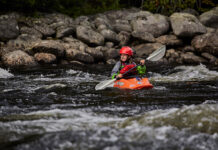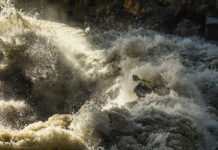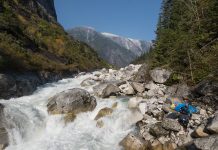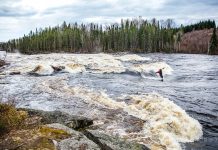What’s in a name? When it comes to world-famous rapids, the answer is found in the stories of local people and paddlers who have launched themselves over the brink, for better or worse. Brooke Hess shares the surprising, true tales of notable rapids from Norway to New Zealand to the Northwest Territories.
How 8 famous rapids got their names
1 Money Drop, Norway
Held annually in Voss, Norway, Ekstremsportveko is the largest extreme sports festival in the world. At the 1999 Ekstremsportveko, event organizers offered South African paddler, Shane Raw, along with his buddies, Erik Martinsen, Arnd Schaeftlein and Mark Eames, 2,000 Norweigan Krone each to run a large and intimidating waterfall on the Strandaelvi River just outside of Voss in front of busloads of spectators. One-by-one, all four of the men peeled out of the eddy just above the drop and had smooth lines in front of hundreds of spectators. They collected their 8,000 Krone ($780 USD) from the organizers, headed to the bar, and aptly named the waterfall Money Drop.
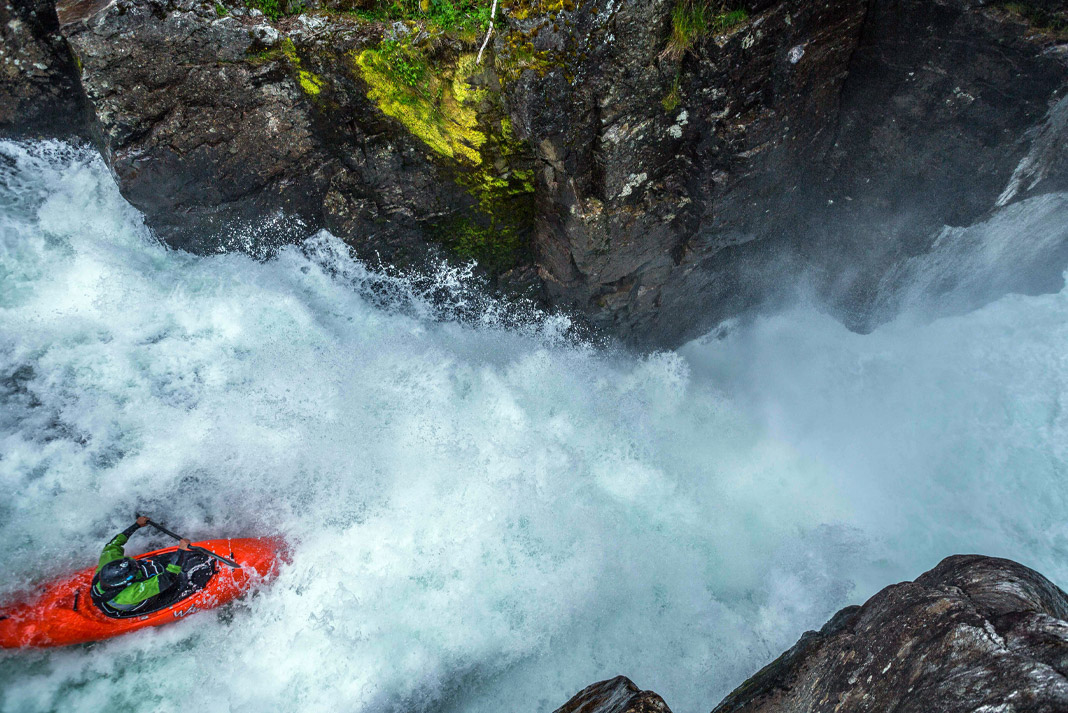
2 Tutea Falls, Kaituna River, New Zealand
The Kaituna River runs through Okere Falls, a small town just outside of Rotorua, and is one of New Zealand’s most popular whitewater rivers. The river was named for its abundant food source for the local Maori, the indigenous people of New Zealand. Kai = food and Tuna = eels. The local iwi (tribe), Ngati Pikiao, are the guardians of the Kaituna River. Tutea Falls, the 21-foot drop mid-way down the Kaituna’s commercial stretch, was named after Tutea, a Maori chief.
3 Disaster Falls, Green River, USA
In 1869, John Wesley Powell led a scientific expedition of the Green and Colorado rivers in the southwestern United States. The three-month-long expedition began in Wyoming at Green River Station and covered river miles through notable canyons such as the Flaming Gorge, the Gates of Ladore, Glen Canyon, and the Grand Canyon of the Colorado. Disaster Falls was named early on in the expedition when the crew crashed and destroyed a boat in the rapid, losing many crucial supplies, including nearly all of the barometers brought for measuring altitude while mapping river miles. Just after the crash, Powell saw some of his men on shore celebrating. Hoping they had found the barometers, he was only slightly disappointed when he learned they were celebrating the recovery of several bottles of whiskey.
4 Separation Rapid, Grand Canyon of the Colorado, USA
Another rapid descended by John Wesley Powell’s expedition, Separation Rapid, got its name when the crew had already spent 99 days on the river. They were low on rations and had just encountered one of the worst rapids yet. High tensions throughout the group made three men decide to desert the expedition. Instead of continuing down the river with the rest of the crew, the three men hiked up what is now named Separation Canyon. They were never seen again.
5 Gringos Revueltos, Quijos River, Ecuador
Gringos Revueltos translates to “scrambled foreigner.” A big hole in the middle of the rapid was for a long time host to a competition among the gringos who visited the Quijos River. Everyone who visited the river had to go for a surf in the hole. Your score would be your age plus how many seconds you lasted.
7 Valley of Headless Men, Nahanni River, Northwest Territories, Canada
This story encompasses an entire river valley, rather than just a rapid, but the story is so unusual it needs to be included. In 1908, brothers Willie and Frank McLeod embarked on a mission into the Nahanni Valley in search of gold. They never returned. Two years later, their headless bodies were found on the banks of the Nahanni River. Nine years later, Martin Jorgenson succumbed to the same fate while on a similar quest for gold. The heads of these men were never found, and the mystery of who murdered them was never solved.
8 Molly’s Nipple, Slave River, Northwest Territories, Canada
In the early days of rafting exploration on the Slave River, many rapids were named during a single run of the river. Richard’s Bane was named when one of the expedition team members flipped his raft. The crew then set up camp and immediately proceeded to drink away the painful memories of the day. In the morning, slightly hungover from the previous night’s festivities, the expedition paddled a long stretch of flatwater to the first rapid of the day. In his hungover state, Richard insisted the rapid looked exactly like his girlfriend’s breast—but only while laying in one exact spot on the rocks next to the rapid. It’s been known as Molly’s Nipple ever since. The next rapid—Sambuca—was named for the drink enjoyed the night before.
New Zealand’s Cole O’Connor Straton on Money Drop near the town of Voss in Norway. | Feature photo: Ciaran Heurteau



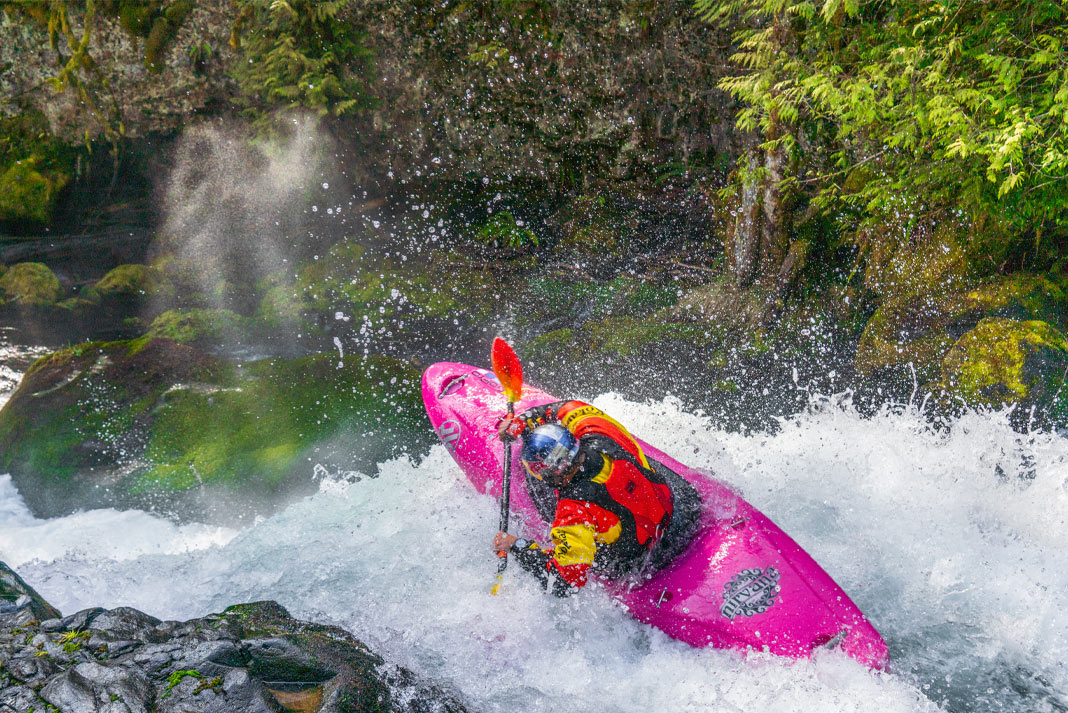

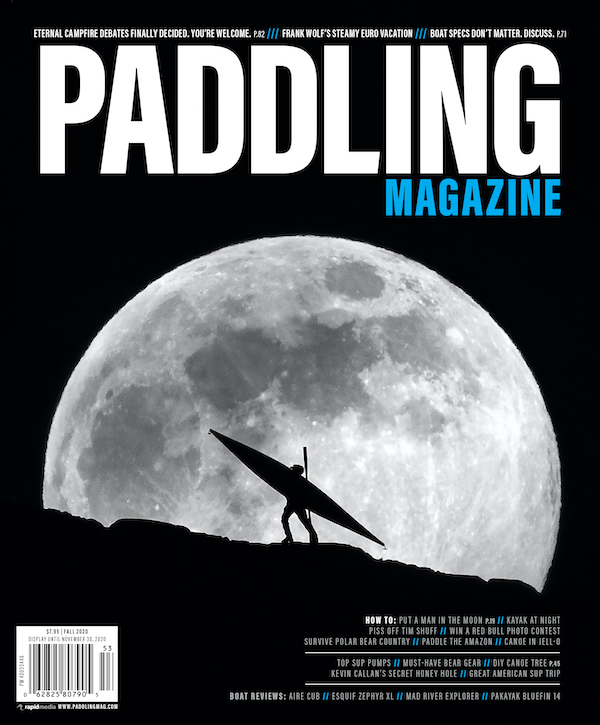 This article was first published in the Fall 2020 issue of Paddling Magazine.
This article was first published in the Fall 2020 issue of Paddling Magazine. 
